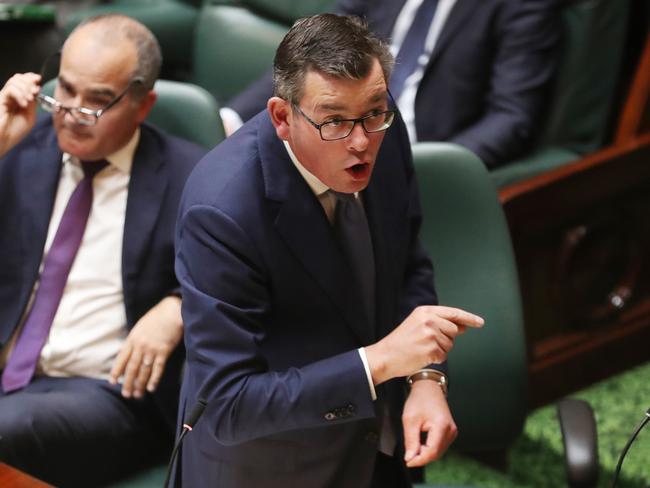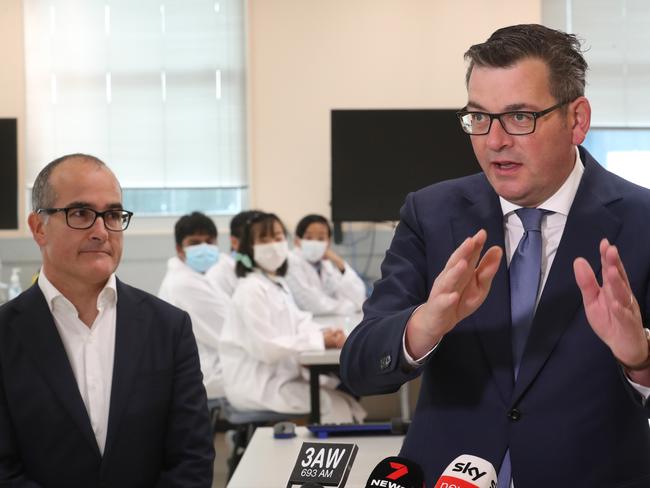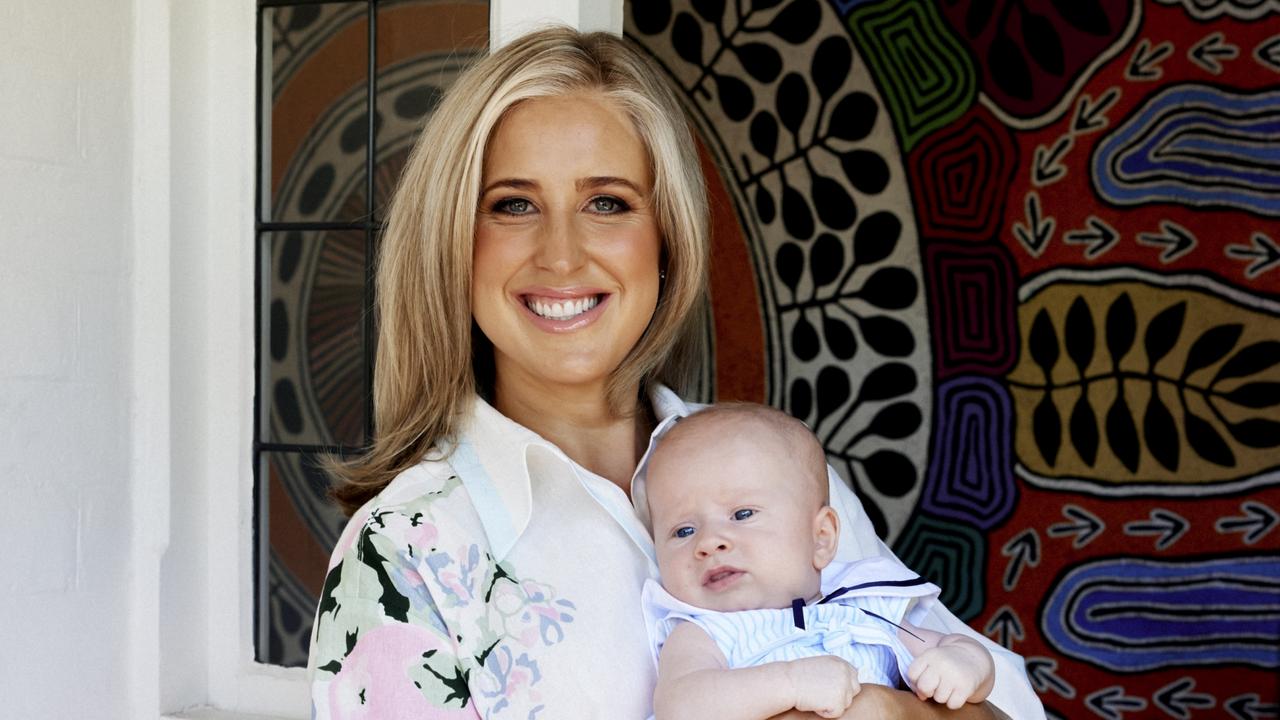Adem Somyurek: 3.9 per cent swing shows depths of dislike for Daniel Andrews
Daniel Andrews would have been dejected on election night after seeing the first tangible evidence that the visceral contempt for him is real.

Opinion
Don't miss out on the headlines from Opinion. Followed categories will be added to My News.
As the federal election results were coming through on Saturday night, most Victorian Labor Party leaders and strategists were busy poring over Victorian marginal seats.
Daniel Andrews, however, would have been discreetly but anxiously tracking voting trends in working-class outer suburban seats.
Andrews would have been eager to evaluate whether the palpable, but until Saturday night still anecdotal, antipathy towards him in the community would manifest itself in the federal election.
Voters’ sentiments towards a state premier do not generally have a significant impact on a federal election result.
Andrews would have been hoping this federal election would be no different and the unpopularity of Scott Morrison would mask any strong anti-Andrews sentiment that existed in the Victorian electorate.
The Labor Party went to sleep on election night in a state of euphoria.
In contrast, Andrews would have gone to bed dejected, having seen the first tangible evidence that the visceral hatred of him in the community picked up by internal polling and anecdotally by his MPs was real and likely to be entrenched.

Andrews and I were elected into parliament together in the Brackslide election of 2002 when there were enormous double-digit swings in outer suburban seats. The biggest swings in 2002 were in the seats that took the baseball bat to the Labor Party primary vote on Saturday.
In 2002 Narre Warren North swung 14.9 per cent, Narre Warren South 13.8 per cent, Cranbourne 9.7 per cent, Frankston 9 per cent, Carrum 10.1 per cent, and Andrews’ own seat, Mulgrave, 11.9 per cent.
Saturday’s results were reminiscent of the 2002 results – except this time away from Labor – with some booths swinging more than they did in 2002.
The federal seat of Holt, which encompasses state seats Cranbourne, Narre Warren South and Narre Warren North, swung 9 per cent on primaries. All these state seats have a margin of around 10 per cent.
Bruce swung 6 per cent on primaries, but the booths that matter for Narre Warren North and Mulgrave, Andrews’ seat, swung viciously.
In Andrews’ own seat a significant number of booths experienced double-digit swings, with the highest being a whopping 22.73 per cent.
The results were even worse in Melbourne’s northern and western suburbs.
Like Holt and Bruce, most of these federal seats cover marginal or highly volatile Labor-held state seats.
Let’s not forget that Saturday’s election was not Andrews’ election. Most anti-Andrews voters may have been able to restrain their rage until November, given that the equally unpopular Morrison was on the ballot.
On Sunday morning, Andrews had his minions furiously spinning the fallacy that the election proved the anti-Andrews vote was a myth.
They also downplayed the drastic drop in Labor’s primary vote in Victoria as simply part of a national phenomenon.

Nothing to see here, they said. They even duped some normally savvy journalists to compare Liberal and Labor primary vote drops in Melbourne.
But this is a meaningless comparison.
Comparing Labor and Liberal primary votes to determine what went wrong with the Labor primary vote is intellectually flawed, it is like comparing apples and oranges.
The appropriate and honest comparison is between the Labor primary vote across jurisdiction and time, not with another party’s primary vote.
The following figures are irrefutable.
Across Australia, the Labor primary vote fell by a mere 0.5 per cent. In Victoria, the Labor primary vote fell by 3.9 per cent.
The only explanation for this is the anti-Andrews sentiment in the community.
History shows that when a long-term, tired and incompetent government with an unpopular leader is turfed out of office, the electorate turns up with baseball bats to punish the governing party.
This result invariably pulverises the incumbent party’s primary vote. That is why the big swing against the Liberals is not surprising.
In fact, the average swing on primaries against a party losing government since the 1996 federal election has been 5.2 per cent. This is higher than the 5.1 per cent swing away from the Liberals in Victoria on Saturday.
In contrast, it is unprecedented for the opposition in an election ejecting an unpopular government to have their primary vote also pulverised by a 3.9 per cent drop.

The only explanation for the dramatic drop in Labor’s primary vote in the outer working-class, culturally diverse suburbs is the virulent anti-Andrews sentiment.
In desperation, Andrews’ lieutenants have tried to argue that the teal candidates taking votes off the Labor primary vote also contributed to the decimation of this primary vote.
This is nonsense.
Labor has lost a very small number of votes in absolute terms in these seats.
The drop in primary votes in these seats is insufficient to register a blip in Labor’s aggregate primary vote.
At the next state election, the Coalition needs significant swings. In some places, it needs over 10 per cent to form a government.
It is a tall order.
Swings of that magnitude cannot be achieved without extraordinary circumstances. But a Premier so reviled that he causes a 3.9 per cent drop in his party’s primary vote across the state in a federal election fits an extraordinary circumstance criterion.
The outer suburban working-class Victorians still have PTSD from Andrews’ lecturing, berating, and demeaning them daily during the pandemic.
All Labor needs in order to be assured of victory at the next state election is a leader who does not cause Victorians to want to throw objects at their TV screen every time they see them – as they do when they see and hear Andrews’ image and voice.
It will also help if the leader does not have the baggage of being responsible for the death of 800 Victorians through the incompetent management of hotel quarantine, is not entangled in potentially three IBAC investigations, and was not the architect of the red shirts rort.
Adem Somyurek is a former Labor minister





